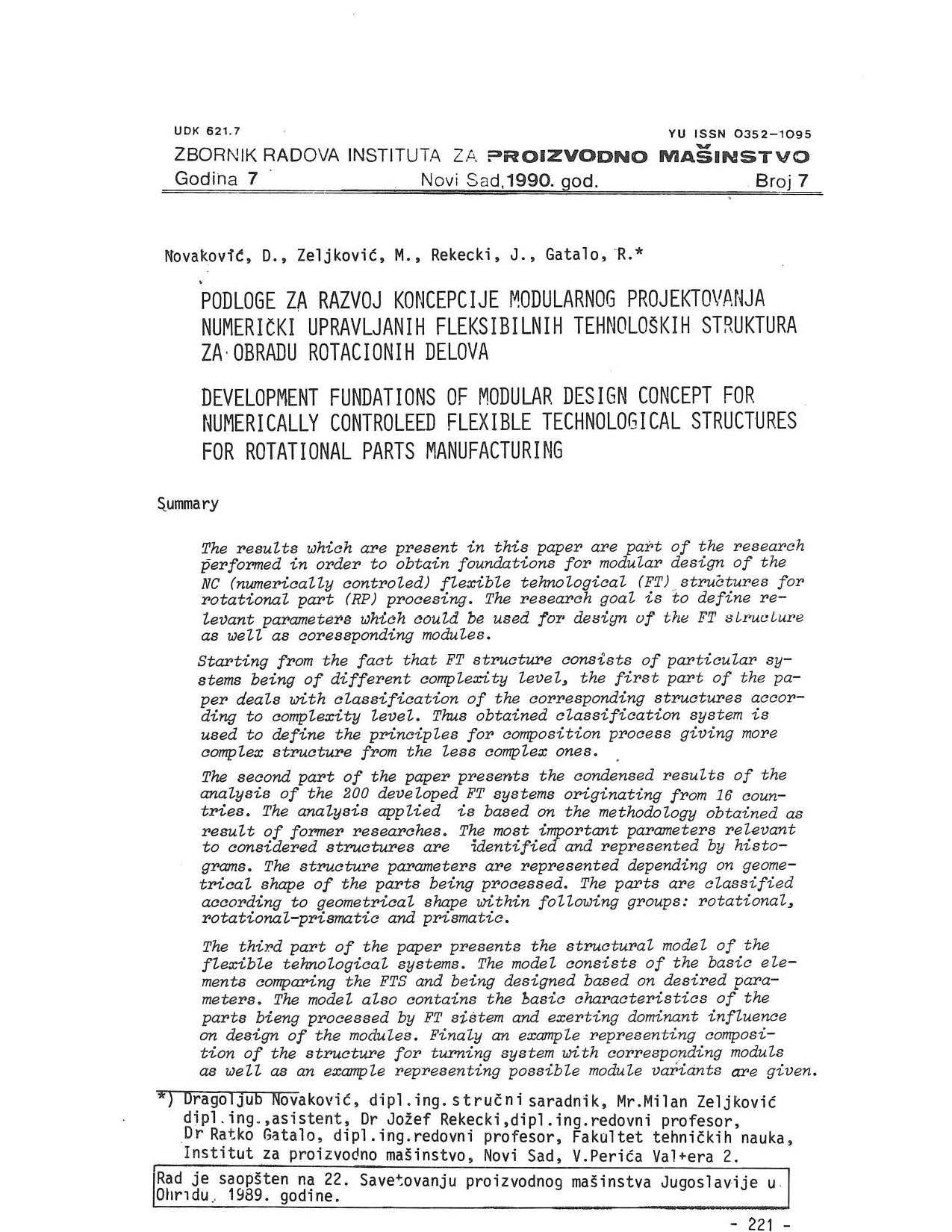Development fundations of modular design concept for numerically controleed flexible technological structures for rotational parts manufacturing

Published 1990-12-01
abstract views: 14 // FULL TEXT ARTICLE (PDF): 8
Keywords
- modular design,
- flexible technological,
- rotational part
How to Cite
Copyright (c) 2023 Journal of Production Engineering

This work is licensed under a Creative Commons Attribution 4.0 International License.
Abstract
The results which are present in this paper are part of the research performed in order to obtain foundations for modular design of the NC (numerically controlled) flexible technological (FT) structures for rotational part (RP) processing. The research goal is to define relevant parameters which could be used for design of the FT structure as well as corresponding modules. Starting from the fact that FT structure consists of particular systems being of different complexity level, the first part of the paper deals with classification of the corresponding structures accord- ding to complexity level. Thus, obtained classification system is used to define the principles for composition process giving more complex structure from the less complex ones. The second part of the paper presents the condensed results of the analysis of the 200 developed FT systems originating from 16 countries. The analysis applied is based on the methodology obtained as result of former researches. The most important parameters relevant to considered structures are identified and represented by histograms. The structure parameters are represented depending on geometrical shape of the parts being processed. The parts are classified according to geometrical shape within following groups: rotational, rotational-prismatic and prismatic. The third part of the paper presents the structural model of the flexible technological systems. The model consists of the basic elements comparing the FTS and being designed based on desired parameters. The model also contains the basic characteristics of the parts being processed by PT system and exerting dominant influence on design of the modules. Finally, an example representing composition of the structure for turning system with corresponding modules as well as an example representing possible module variants are given.

